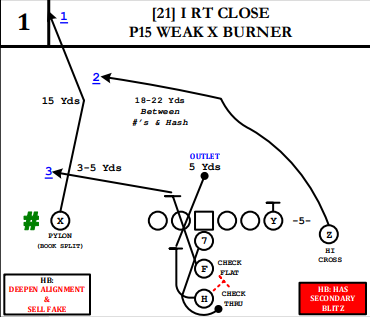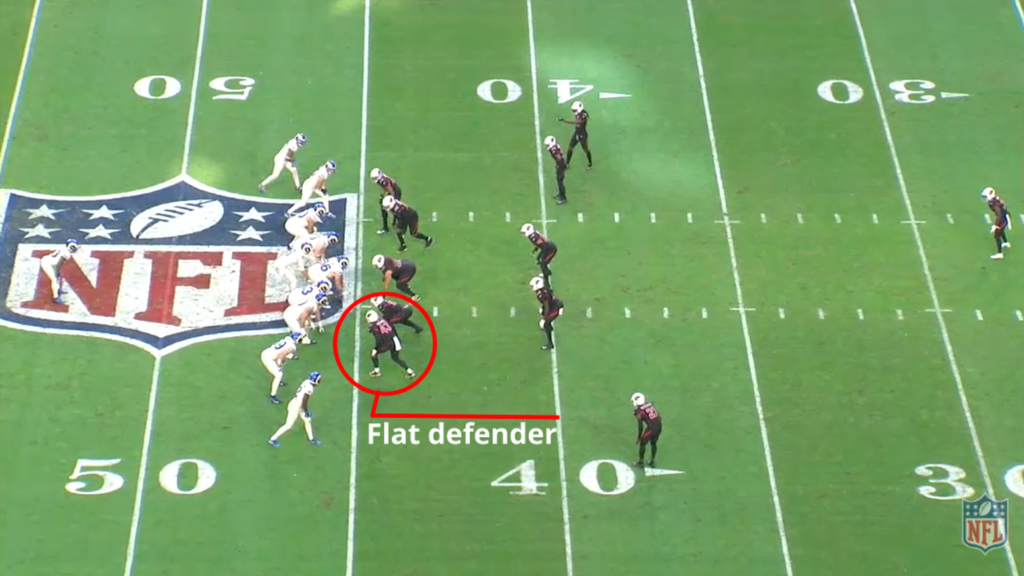
The Sail Concept is one of the more common concepts in NFL playbooks. Its simplicity and versatility can give the defense multiple looks while being easy to read for the quarterback.
Read More: Dagger Concept
Sail Concept + Assignments
Sail overloads one side of the defense with three routes at three different depths. As long as the offense works within that framework, there’s almost an infinite number of ways to run Sail. At it’s most basic, Sail has:
- A receiver in the flats
- A receiver at the intermediate level (12-15 yards)
- A receiver deep
With this spacing, the defensive zones are flooded with three receivers against two defenders. That puts those defenders in conflict. Whichever route they choose, the quarterback can throw to the other one. The vertical route is usually used to clear out the deep defender. The offense is then able to put the flat defender in a high-low read on the intermediate and flat route.

What those individual routes all are can vary. Sail is often run off of play-action and because of that, it gives receivers more time to get to their landmarks. That means you can have receivers come from either side of the formation.

Coverage Read for Sail
Sail uses its spacing to create a high-low read on the defense. There are double moves and wrinkles to the vertical route, but generally, it’s not thrown unless the offense likes the matchup or has schemed something against the coverage. That leaves the main read for Sail as the underneath flat defender.

If that flat defender stays low with the short pivot route by the tight end, the quarterback throws the intermediate route behind him. With the flat defender staying low on Tyler Higbee, the linebackers flowing hard to the play-action, and the vertical route clearing the corner, there is no help on that intermediate crossing route.
Read More: Stick Concept
If the opposite happens, the quarterback dumps the ball off to the flats. Most defenses coach their guys to allow exactly that. They would rather take away the deep routes and rally to tackle underneath. If that flat route gets leverage on the defender, though, it can offer a good opportunity for yards after the catch on a very short throw.
If you’re the quarterback, you:
- Locate the flat defender
- Throw off of his movement
When you can get those deep shots is when there’s a coverage mismatch or you’re setting up a double move to attack defensive tendencies. The short and intermediate routes can be effective against man because of their ability to run away across the field, but man coverage is also a great opportunity to take your shot on the deep route.
Double Move off of Sail Concept

To combat teams that jump the intermediate route going across the field, a common adjustment is to bend that vertical route back into the middle of the field. This attacks where the safety has just vacated. Since the entire defense is used to seeing the normal Sail Concept, they flow to it, expect the normal route combination, and then the vertical route breaks off to a post.
The Sail concept is one of the most common plays in football. Every team has a variation of it and uses a different combination of routes out of different formations. It creates a high-low read on the defense, floods zones so that the offense has the numbers advantage, and has the capability to beat man coverage over the top.
